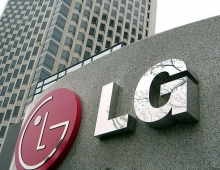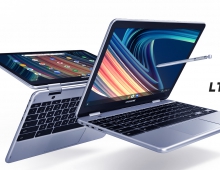
LTE Cellphones to Reach 56 Million in 2013 Says New Forward Concepts Study
Forward Concepts has announced the publication of its newest annual study of the worldwide cellphone market and virtually all of the chips that go into them.
The study, "Cellular Handset & Chip Markets '09," gauges the performance of the top 53 handset vendors and ranks their 2008 market shares.
In addition, the report provides estimates of the market shares of cellphone vendors by air technology, including HSPA+ and LTE.
Market metrics are the central focus of the study, and some key findings are:
- Cellphone unit market growth continues slowing globally. The 2008 market was up 4.1% but is forecast to decline by 4.4% in 2009 to 1.22 billion shipments. However, a healthier 12.8% growth is forecast for 2010.
- In spite of an overall decline this year, smartphone shipments are predicted to grow by 25%, feature phones by 2.5% and ultra-low-cost phones for developing countries will grow by 14.5%.
- The fast-growing smartphone market is driving introduction of peripherals that support Wi-Fi, Bluetooth, GPS, and FM radio on a single chip.
- HSPA+ is emerging in 2009, and will begin to displace WCDMA and HSDPA. LTE will begin in 2010, first as data cards and dongles. The forecast calls for LTE handsets to reach 56 million units in 2013 for a compound growth rate of 262%.
- Although the cellphone digital mobile TV market is growing, free-to-air analog mobile TV will dominate the 78-million receiver unit market in 2009, accounting for over half of the world market...driven by the demand in China, Southeast Asia and Eastern Europe.
- The ever-present LCD display will soon have to make room for newer displays, like OLED, ePaper, Qualcomm's Mirasol, and Liquavista. The market for these new "post-LCD" displays is growing fast...to over $3 billion in 2013.
- MEMS constitute another fast-growing component family in the cellphone market, expanding from basic accelerometers, to filters, gyroscopes, RF switches and microphones, reaching over $1.6 billion in 2013.
- Application processor competition is heating up as the demand for increasing video and Internet functionality grows with 3G's higher data rates. There is a clear trend of bundling application processors with digital basebands, either on a single die or in a multichip package. The resulting "Communication Processors" are becoming popular, and could ultimately hurt companies which specialize in only one of those components.
According to the principal author, Carter L. Horney, "The cellphone continues to be the physical and market magnet that is pulling in the functionality of digital cameras, PDAs, MP3 players, GPS navigators, Bluetooth, Wi-Fi, AM/FM Radio, mobile TV, cordless phones, smart cards and even fingerprint sensors, and the cellphone is quickly becoming the dominant market for each and all of these functions. Our report covers all of these cellphone component markets, and companies making stand-alone versions of such products would be well-advised to understand how their market will be impacted by cellphones."
Will Strauss, Forward Concepts president and editor of the report, said, "Qualcomm continues to dominate the cellphone chip market but ST-Ericsson is expected to displace Texas Instruments for the number-two spot in 2009. Infineon is not far behind and with recent new financing, their future appears brighter now. With new peripherals and features being continually added, there opportunities for smaller vendors to target new chip types to get their piece of the market. And this valuable resource provides the key information needed for new business plans. We are confident that this study provides the most comprehensive coverage of cellphone and cellphone chip markets available."
Details are available at: www.fwdconcepts.com/cell9.
In addition, the report provides estimates of the market shares of cellphone vendors by air technology, including HSPA+ and LTE.
Market metrics are the central focus of the study, and some key findings are:
- Cellphone unit market growth continues slowing globally. The 2008 market was up 4.1% but is forecast to decline by 4.4% in 2009 to 1.22 billion shipments. However, a healthier 12.8% growth is forecast for 2010.
- In spite of an overall decline this year, smartphone shipments are predicted to grow by 25%, feature phones by 2.5% and ultra-low-cost phones for developing countries will grow by 14.5%.
- The fast-growing smartphone market is driving introduction of peripherals that support Wi-Fi, Bluetooth, GPS, and FM radio on a single chip.
- HSPA+ is emerging in 2009, and will begin to displace WCDMA and HSDPA. LTE will begin in 2010, first as data cards and dongles. The forecast calls for LTE handsets to reach 56 million units in 2013 for a compound growth rate of 262%.
- Although the cellphone digital mobile TV market is growing, free-to-air analog mobile TV will dominate the 78-million receiver unit market in 2009, accounting for over half of the world market...driven by the demand in China, Southeast Asia and Eastern Europe.
- The ever-present LCD display will soon have to make room for newer displays, like OLED, ePaper, Qualcomm's Mirasol, and Liquavista. The market for these new "post-LCD" displays is growing fast...to over $3 billion in 2013.
- MEMS constitute another fast-growing component family in the cellphone market, expanding from basic accelerometers, to filters, gyroscopes, RF switches and microphones, reaching over $1.6 billion in 2013.
- Application processor competition is heating up as the demand for increasing video and Internet functionality grows with 3G's higher data rates. There is a clear trend of bundling application processors with digital basebands, either on a single die or in a multichip package. The resulting "Communication Processors" are becoming popular, and could ultimately hurt companies which specialize in only one of those components.
According to the principal author, Carter L. Horney, "The cellphone continues to be the physical and market magnet that is pulling in the functionality of digital cameras, PDAs, MP3 players, GPS navigators, Bluetooth, Wi-Fi, AM/FM Radio, mobile TV, cordless phones, smart cards and even fingerprint sensors, and the cellphone is quickly becoming the dominant market for each and all of these functions. Our report covers all of these cellphone component markets, and companies making stand-alone versions of such products would be well-advised to understand how their market will be impacted by cellphones."
Will Strauss, Forward Concepts president and editor of the report, said, "Qualcomm continues to dominate the cellphone chip market but ST-Ericsson is expected to displace Texas Instruments for the number-two spot in 2009. Infineon is not far behind and with recent new financing, their future appears brighter now. With new peripherals and features being continually added, there opportunities for smaller vendors to target new chip types to get their piece of the market. And this valuable resource provides the key information needed for new business plans. We are confident that this study provides the most comprehensive coverage of cellphone and cellphone chip markets available."
Details are available at: www.fwdconcepts.com/cell9.





















